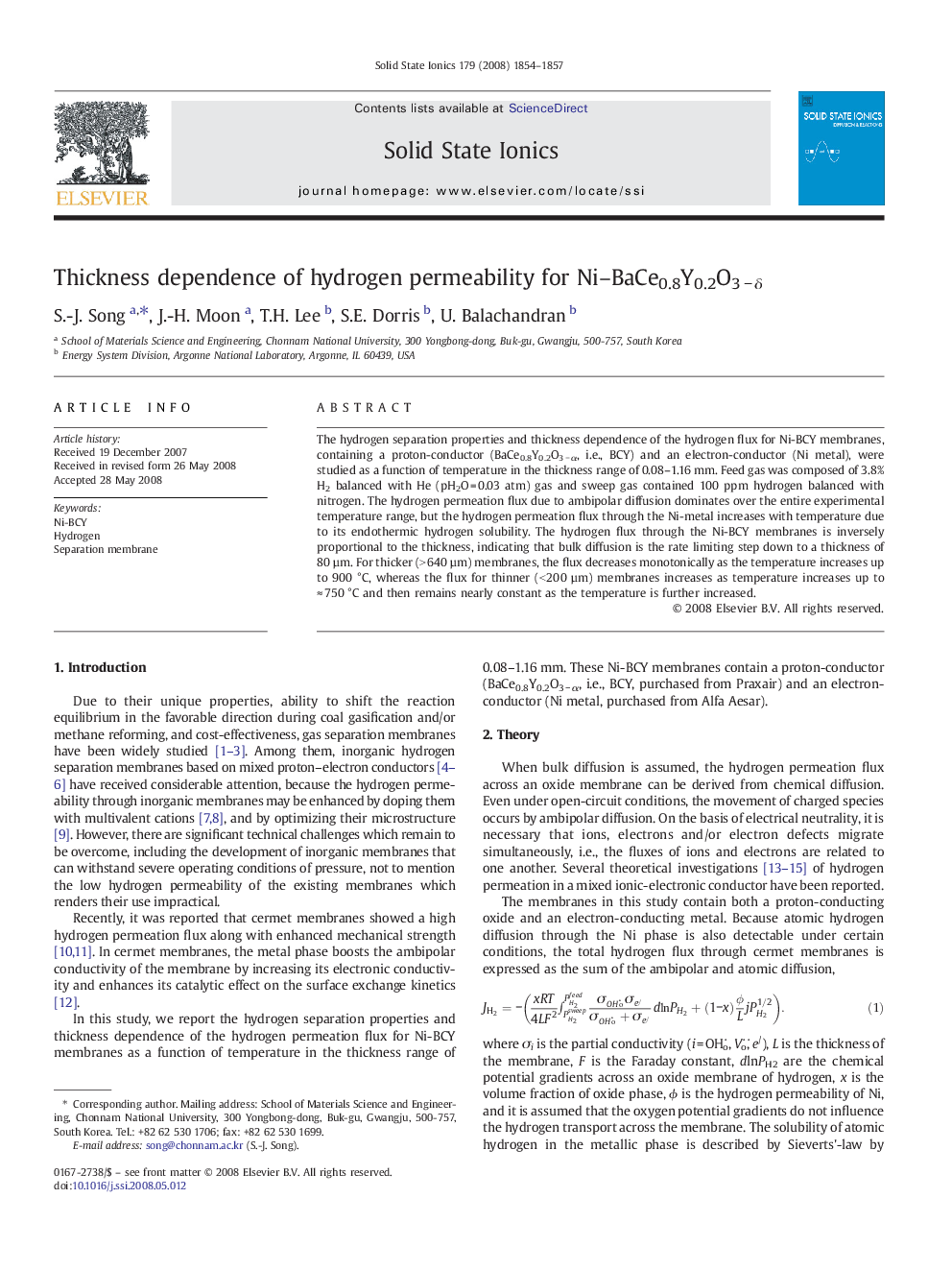| Article ID | Journal | Published Year | Pages | File Type |
|---|---|---|---|---|
| 1298000 | Solid State Ionics | 2008 | 4 Pages |
The hydrogen separation properties and thickness dependence of the hydrogen flux for Ni-BCY membranes, containing a proton-conductor (BaCe0.8Y0.2O3 − α, i.e., BCY) and an electron-conductor (Ni metal), were studied as a function of temperature in the thickness range of 0.08–1.16 mm. Feed gas was composed of 3.8% H2 balanced with He (pH2O = 0.03 atm) gas and sweep gas contained 100 ppm hydrogen balanced with nitrogen. The hydrogen permeation flux due to ambipolar diffusion dominates over the entire experimental temperature range, but the hydrogen permeation flux through the Ni-metal increases with temperature due to its endothermic hydrogen solubility. The hydrogen flux through the Ni-BCY membranes is inversely proportional to the thickness, indicating that bulk diffusion is the rate limiting step down to a thickness of 80 µm. For thicker (> 640 µm) membranes, the flux decreases monotonically as the temperature increases up to 900 °C, whereas the flux for thinner (< 200 µm) membranes increases as temperature increases up to ≈ 750 °C and then remains nearly constant as the temperature is further increased.
